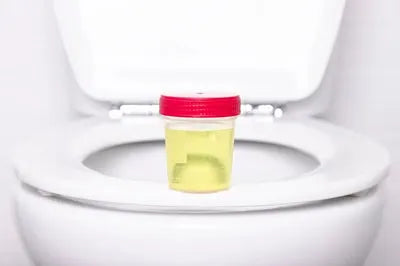Urinary Incontinence – A Brief Overview
The body produces urine in the kidney and stores it in the bladder. During urination, the bladder contracts, and the urine is expelled from the body through a tube called the urethra. In certain circumstances this process of expulsion is interrupted or hindered. This accidental leakage of urine is known as urinary incontinence.
The management of urinary incontinence can involve medication, physical therapy, surgery and the use of adult diapers.
Urinary Incontinence – Its Types, Causes, and Symptoms
Several people, especially women, experience minor, occasional leaks of urine. Others may experience a more continued loss of a larger amount, based on the urinary incontinence symptoms faced; the condition is segregated into various types. This segregation helps the management of urinary incontinence based on their root causes.
-
STRESS INCONTINENCE: This is seen commonly in middle-aged women due to obesity, pregnancy or the beginning of menopause. In this type, small amounts of urine are squirted out during activities such as coughing, laughing, exercising or lifting heavy objects. The management of urinary incontinence of this type can be done using light incontinence pads. Some women even use regular sanitary pads such as RIO pads.
-
URGE INCONTINENCE: This occurs mostly in those dealing with diabetes, Alzheimer's, Parkinson’s, or multiple sclerosis. It is characterised by a sudden uncontrollable urge to urinate. Sufferers cannot hold their urine long enough to get to the toilet and end up spoiling their clothes and bedding. An effective solution for this is adult diapers which provide easy and affordable incontinence protection.
-
OVERFLOW INCONTINENCE: This happens mainly in men dealing with prostate issues. The enlarged prostate blocks the urethra. As a result, the urethra remains full at all times, with small amounts of urine constantly leaking from it. This can be caused by diabetes, ageing and spinal injuries, among other things.
-
FUNCTIONAL INCONTINENCE: This type of incontinence is caused by a physical disability, such as arthritis, that makes it difficult for the patient to get to the toilet even when they have a strong urge to urinate.
Incontinence diapers can also effectively deal with urine leakage from UTIs, constipation and STDs.
The core reasons behind incontinence are as follows:
-
Overactive bladder muscles
-
Weakening of the pelvic floor
-
Weakening of the bladder muscles/sphincter
-
Damage to the nerves that connect the bladder to the brain
-
When pelvic organs get out of their designated place, pressing down on the bladder (pelvic organ prolapse)
-
Weight
-
Blockage because of prostate issues
-
Injury
-
Enlarged prostate, which blocks the urethra.
The most common urinary incontinence symptoms include:
-
Feeling sudden and uncontrollable urges to urinate
-
Having to get up more than once at night to urinate
-
Uncontrolled urination or involuntary urine leakage
-
Leaking a few drops of urine while coughing, squatting or laughing
-
Inability to urinate even while the urge is felt
Urinary incontinence symptoms can be felt by various people but are most common in pregnant women, the elderly and post certain surgeries.
Best Practices to Keep Urinary Incontinence Challenges at Bay or At Least Manage Them
There are many steroid and surgery based treatments for urinary incontinence. However, many patients prefer less invasive treatments to start with. The best behavioural and physical treatments that can help with the management of urinary incontinence include:
-
DOUBLE VOIDING: This is especially helpful with overactive incontinence. The patient must empty their bladder, wait a few moments and then try again. Double voiding makes sure that the residual amounts of urine are expelled, too.
-
BLADDER TRAINING: The goal here is to train the bladder to hold urine–first for small intervals such as ten minutes, building to 2-3 hours. If done effectively, this can help rebuild the bladder’s ability to hold urine for a longer period of time.
-
SCHEDULED TOILET BREAKS: Scheduling toilet breaks every few hours, at specific, pre-decided intervals, instead of waiting for the urge to urinate can help empty the bladder regularly and manage leaks.
-
DIET MANAGEMENT: The doctor may advise you to cut down on alcohol, caffeine, acidic foods and certain liquids. Losing weight and increasing physical activity help better manage bladder control issues better.
When to Get Adult Diapers?
Adult diapers or incontinence pads can help provide incontinence protection, especially post-surgery or pregnancy. Incontinence diapers can be especially helpful in managing the following:
-
Adult diapers can help patients sleep peacefully at night. Friends Overnight Diapers can comfortably absorb the urine for up to 16 hours, allowing patients a night of restful sleep. This makes sure the patient and their caregivers do not have to wake up at night to use the toilet or because the sheets have been soiled. A better night’s sleep means a better start to each new day.
-
Adult diapers can help patients reclaim their work schedules. Friends diaper pants can be worn for up to 8 hours, comfortably under pants, skirts and saris. The diapers are sleek, discreet and comfortable to be worn.
-
Adult diapers can also help athletes, artists and other professionals continue pursuing their passions. Friends Premium Adult Diaper pants are built like briefs keeping comfort and mobility in mind. be it a morning jog or an evening drive they ensure the delight remains constant.
-
Adult diapers are also very helpful in handling Parkinsons’ patients, or post complicated surgeries. Friends Tape-Style Adult diapers can be easily put in immobile patients by caregivers. These incontinence diapers are easy to put on and dispose of. One simply needs to role them onto themselves, wrap them in a newspaper or plastic bag and dispose of them.
When to Seek Medical Attention?
It is important to remember that incontinence can be a symptom of an underlying cause. It is thus imperative to notify one’s doctor immediately after you spot symptoms, so that the underlying cause can be diagnosed and treated without much ado. The doctor may recommend a few basic tests or medication. If the patient is fit and otherwise non-disabled, the doctor may recommend surgical procedures.
We understand that dealing with incontinence can be complicated and intimidating–the leakage of urine can also be embarrassing. However, with adult diapers, care, management, and the love and support of one’s close friends and family, everything can be better soon enough.
















